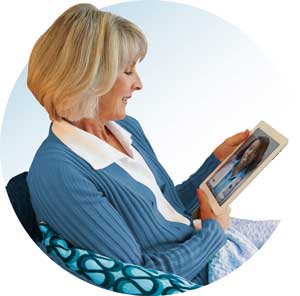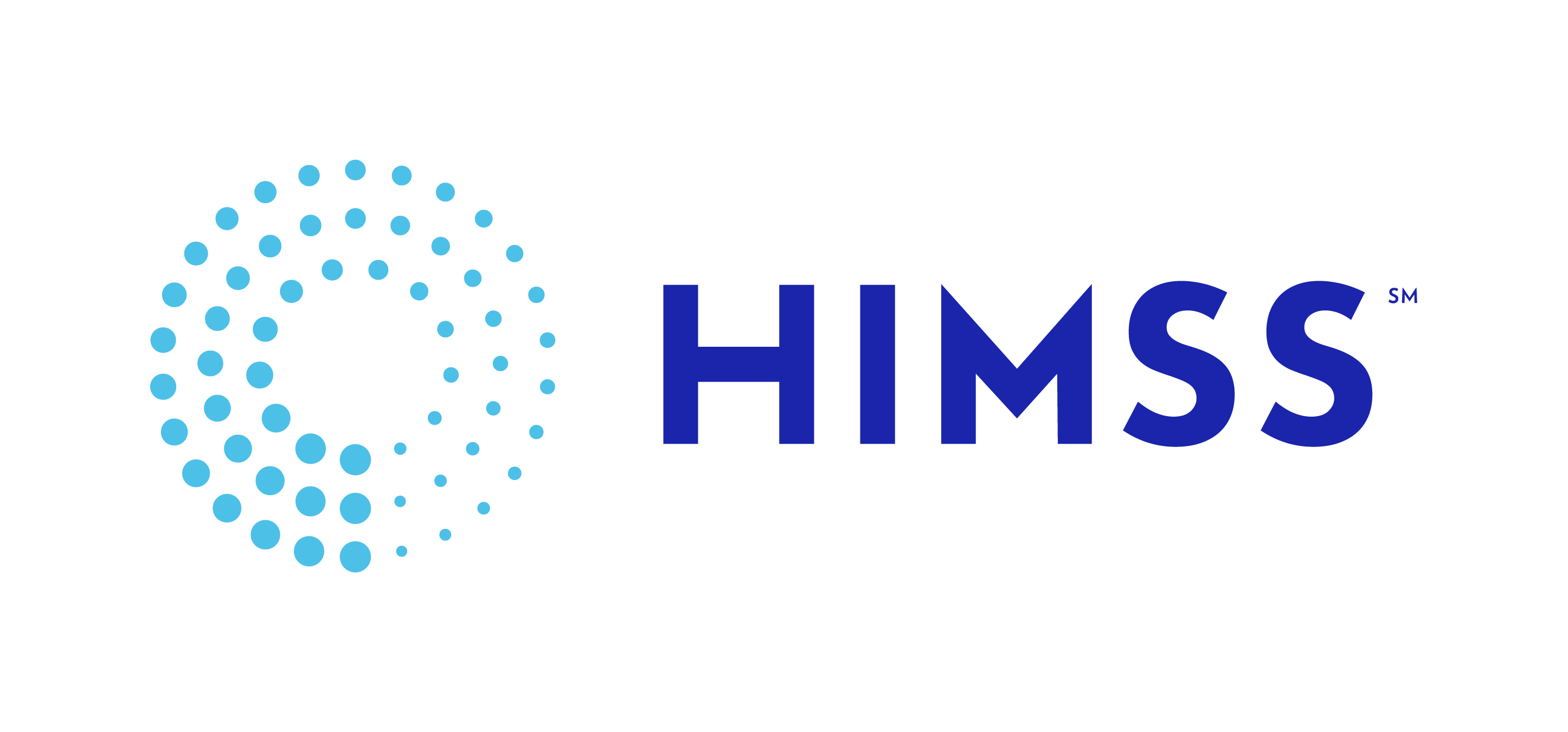Mid-Year 2015-16Connected Patient
 Empowering Patients, Advancing Care
Empowering Patients, Advancing Care
by Karen Kennedy, Clinical Informatics Nurse (CIN) at Scripps Health – Medical Management, and Co-Chairperson for our SoCal Chapter Marketing and Communications Committee
This October, our HIMSS SoCal team participated in the HIMSS Media’s Patient Engagement Summit in San Diego. Thought leaders from many of the nation’s most renowned and progressive healthcare organizations presented their experiences and case studies, with practical insight into how patient engagement works.
Clark Kegley, Assistant Vice President, Information Services at Scripps Health, and a Past President for our Chapter, moderated our HIMSS SoCal sponsored Technology Roundtable, “Where's the ROI?”. We were fortunate to have Karen Kennedy, Clinical Informatics Nurse (CIN) at Scripps Health – Medical Management, and Co-Chairperson for our SoCal Chapter Marketing and Communications Committee, meet with some of the panelists and speakers at the Forum.
Following are her interviews with John Sharp, Senior Manager, Consumer Health IT for the HIMSS National Personal Connected Health Alliance, and John Conklin, CPHIMS - Connected Health Solutions Leader.
John Sharp, MSSA, PMP, FHIMSS is the senior manager of Consumer Health IT for the Personal Connected Health Alliance of HIMSS. His focus is on patient engagement technologies. Prior to coming to HIMSS in 2013, he worked at Cleveland Clinic in research informatics. He is active on social media and blogs regularly on LinkedIn about connected health. He is also adjunct faculty in the Health Informatics Master’s program at Kent State University teaching Clinical Analytics. He works at the HIMSS Innovation Center in Cleveland.
- What does patient engagement currently look like nationally? Is there an ideal future state?
John Sharp: Patient engagement nationally is beginning to take hold. A new report from US News and World report rated leading hospitals on patient engagement including patient access to medical records and found a strong performance (http://health.usnews.com/health-news/best-hospitals/articles/2015/10/15/most-connected-hospitals-2015-16-results ). Two statistics from the ONC are of note in a recent report: In 2014, over half of individuals who were offered online access to their medical record viewed their record at least once within the last year and almost half of individuals nationwide engaged in at least one of the following activities: sending or receiving a text message or an email from their health care provider; using a smart phone health application; or looking at their test results online. http://www.himss.org/News/NewsDetail.aspx?ItemNumber=44844
- What is patient engagement's biggest roadblock right now? Is it technology vs. inability or unwillingness of the patients?
John Sharp: Previously, some providers felt patients were not interested in viewing their data. This is being proven wrong in many ways including the fact that the elderly are adopting this technology as quickly as younger groups. While there remain some groups with low health and technology literacy which must receive outreach, I believe the main roadblock is that providers are not educating patients about the value of having access to their data. As patients begin to be engaged in shared decision making with their providers, they will begin to value the data which is meaningful to addressing their chronic conditions.
- Regarding the meaningful use Stage 2 view, download, transmit requirement – this remains a challenge for some healthcare organization. Do you feel this measure is trying to control a patient’s behavior or engage organizations to include patients’ in their care?
John Sharp: I believe that this regulation is primarily incentivizing organizations to include patients in their care. The intent of the regulation is to empower patients to not only obtain their own health data but also use it to improve care and healthcare decision making.
- Do you see smartphone apps helping healthcare providers gain traction with engaging younger patients? What apps have you currently seen with high success rates? Ex: App for scheduling, bill pay, secure messaging…
John Sharp: Apps are certainly an opportunity to engage all ages, not just the digital natives. While millennials use apps as their primary means of managing many aspects of their lives, other age groups are moving in this direction. The highest success rates are scheduling and bill paying for the younger demographic while older patients and those with multiple chronic conditions will find prescription refills and lab results more important. Secure messaging can be powerful but both patients and providers are sorting out how to use it appropriately as part of routine follow up care.
- What is your view on Patient Portals?
John Sharp: Although promising with regards to engaging patient, there still remains some fear surrounding concern that patients will be slow to use them and that those who could benefit from better access to information won't take advantage.
Patient portals are a valuable tool which is underutilized. Patient access to personal health data and communication tools is essential for joint decision making. However, not all portals were created on the principles of user-centered design and may discourage use. In the future, two changes need to occur – portals should be designed in terms of a patient workflow around managing their conditions and patient preferences need to be taken into account, some preferring communication by texting, others mobile apps and others by phone.
Engaging the right patients is key. For many populations the costliest patients are some of the hardest to engage, but not engaging them represents a large, missed opportunity. What are some approaches that organizations can take to engage the high risk patients?
High cost/high risk patients are a major focus for accountable care organizations (ACOs). Granted that some of these patients may have lower incomes, lack technology and have low health literacy. However, we should not stereotype these patients. Some may be comfortable with texting to communicate with their medical team, others may benefit from remote patient monitoring which requires no technology knowledge from them. Others can benefit from simple, customized tablet applications which many health systems are now piloting.
- What are your views on sustained patient engagement?
John Sharp: Sustained patient engagement will take effort on the part of provider organizations. This should include technology investment which can realize a return on investment via improved health outcomes but also, in the long term, lower costs under value-based reimbursement. Also, to sustain use of patient engagement technology by patient and providers, it should become part of the clinical workflow, for instance, patients can be involved in medication reconciliation by checking their medication list in the portal and requesting that any errors be corrected. Third, patients should be engaged in the design of these technologies; patient panels which review enhancement to portals or design of new patient-facing apps which help ensure adoption of these features to improve health. In these ways, patient engagement will become widely adopted as part of routine care in the future.
John Conklin, CPHIMS - Connected Health Solutions Leader. John has been in healthcare IT for over 15 years creating new and lasting products and solutions implemented in both public and private provider organizations across the United States.
- What does an ideal future state for patient engagement look like?
John Conklin: I see an ideal future state for patient engagement to be an integrated environment, an ever present solution that’s seamless within daily life. My vision is something that’s integrated and built into our homes and autos with voice activation and ‘Siri’ like responses. A solution that’s on our smart phones for portability but again, it’s something that’s mostly disappeared from our eyes and hands and more voice driven. This is driven by a consumer centric cultural shift in healthcare.
- What is patient engagement's biggest roadblock right now? Is it technology vs. inability or unwillingness of the patients?
John Conklin: Patient Engagement’s biggest roadblock is not technology; it’s more of the mindset and culture of the general population. We need people to think of and view healthcare differently than we do today. We need better methods for engaging, easier ways for people to visit or receive care from a doctor, easier methods to seek out care. Technology will help promote patient engagement but it needs to disappear from being front and center.
- Do you see smartphone apps helping healthcare providers gain traction with engaging younger patients? What apps have you currently seen with high success rates? Ex: App for scheduling, bill pay, secure messaging…
John Conklin: Helping but this is not the end all solution. Having apps is taking us in the right direction however we need better solutions that are much easier to use; much less options for a user to select, etc.
- What is your view on Patient Portals? Although promising with regards to engaging patient, there still remains some fear surrounding concern that patients will be slow to use them and that those who could benefit from better access to information won't take advantage.
John Conklin: It is again a cultural shift. The patient portal is useful for scheduling and probably other areas but it’s not the solution for patient engagement. I think Patient Portals are very early in the adoption phase and I don’t see the use increasing much past requirements set by MU Stage 3. Adoption of portals may increase when we witness mass change of the health consumer mindset. Until healthcare becomes a way of everyday life, it’s going to be seen as a B2B model. We need healthcare to be a B2C, consumer oriented model.
- What are your views on sustained patient engagement?
John Conklin: Cultural shift. When we have engagement we will sustain it through this cultural shift where people know they can receive ubiquitous access to healthcare services. E.g. in Pharmacies, in shopping malls, etc. The easier it is for people to receive care, the easier it is for people to become more consistently engaged in their care.
